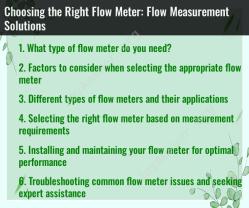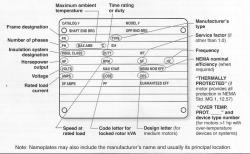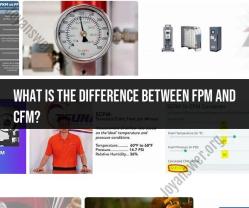What is a hydraulic pressure tester?
A hydraulic pressure tester, also known as a hydraulic pressure gauge or hydraulic pressure test kit, is a device used to measure and test the pressure of hydraulic systems. Hydraulic systems are commonly found in various applications, such as industrial machinery, construction equipment, automotive systems, and hydraulic power tools. These systems use pressurized fluids, typically hydraulic oil, to transmit force and power.
A hydraulic pressure tester is designed to perform the following functions:
Pressure Measurement: The primary function of a hydraulic pressure tester is to measure the pressure within a hydraulic system. It does so by connecting to the system's hydraulic lines, typically at specific test ports, and providing a pressure reading in units like psi (pounds per square inch), bar, or pascals.
Diagnostic and Troubleshooting: Hydraulic pressure testers are essential tools for diagnosing and troubleshooting hydraulic system issues. They can help identify problems such as leaks, blockages, pressure fluctuations, and other irregularities in the system.
System Verification: Prior to putting a hydraulic system into operation or after maintenance or repairs, a hydraulic pressure tester can be used to verify that the system is functioning within the desired pressure range and is safe for operation.
Calibration and Adjustment: Hydraulic pressure testers can also be used for calibrating and adjusting relief valves, pressure regulators, and other components within the hydraulic system to ensure they operate at the specified pressure levels.
Preventative Maintenance: Regular pressure testing of hydraulic systems is a part of preventative maintenance. It helps detect and address potential issues before they lead to more significant problems or system failures.
Hydraulic pressure testers come in various types and designs, including analog and digital models. They often include a gauge or display for pressure readings, a connection system (such as quick-connect fittings or threaded adapters) for attaching to the hydraulic system, and sometimes additional features like data logging and the ability to capture peak pressure values.
Using a hydraulic pressure tester should be done by individuals with a good understanding of hydraulic systems and safety precautions. Testing hydraulic pressure can be hazardous, so it's crucial to follow proper procedures and safety guidelines. If you are not experienced in using hydraulic pressure testers, it is advisable to seek assistance from a qualified technician or engineer to ensure safe and accurate testing.
What is a hydraulic pressure tester and how does it work?
A hydraulic pressure tester is a device used to measure and test the pressure of hydraulic systems. It consists of a pump, a pressure gauge, and a reservoir of hydraulic fluid. The pump is used to pressurize the hydraulic system, and the pressure gauge is used to measure the pressure. The reservoir of hydraulic fluid provides a constant supply of fluid to the pump.
To use a hydraulic pressure tester, the tester is connected to the hydraulic system at a test point. The pump is then used to pressurize the system until the desired pressure is reached. The pressure gauge is then read to measure the pressure.
The significance of hydraulic pressure testing in different industries
Hydraulic pressure testing is an important safety and quality control procedure in a variety of industries, including:
- Aerospace: Hydraulic systems are used in aircraft to control flight surfaces, landing gear, and other critical systems. Hydraulic pressure testing is used to ensure that these systems are operating at the correct pressure and that they are free of leaks.
- Automotive: Hydraulic systems are used in cars and trucks to power brakes, steering, and other components. Hydraulic pressure testing is used to ensure that these systems are operating at the correct pressure and that they are free of leaks.
- Construction: Hydraulic systems are used in construction equipment to power excavators, bulldozers, and other machines. Hydraulic pressure testing is used to ensure that these systems are operating at the correct pressure and that they are free of leaks.
- Manufacturing: Hydraulic systems are used in manufacturing plants to power machinery and equipment. Hydraulic pressure testing is used to ensure that these systems are operating at the correct pressure and that they are free of leaks.
- Oil and gas: Hydraulic systems are used in oil and gas exploration and production to power drilling rigs, pumps, and other equipment. Hydraulic pressure testing is used to ensure that these systems are operating at the correct pressure and that they are free of leaks.
Types of hydraulic pressure testers and their applications
There are two main types of hydraulic pressure testers: manual hydraulic pressure testers and electronic hydraulic pressure testers.
Manual hydraulic pressure testers are powered by a hand pump. They are typically used for testing small hydraulic systems, such as those found in cars and trucks.
Electronic hydraulic pressure testers are powered by an electric motor. They are typically used for testing large hydraulic systems, such as those found in aircraft and construction equipment.
Calibration and maintenance of hydraulic pressure testing equipment
Hydraulic pressure testing equipment must be calibrated regularly to ensure that it is accurate. Calibration is typically performed by a certified calibration laboratory.
Hydraulic pressure testing equipment must also be maintained properly to ensure that it is in good working condition. This includes cleaning the equipment after each use and inspecting it for wear and tear.
Ensuring safety during hydraulic pressure testing procedures
Hydraulic pressure testing can be dangerous if it is not performed safely. There are a number of safety precautions that must be taken, including:
- Wearing appropriate safety gear, such as safety glasses and gloves
- Using the correct test equipment for the job
- Following the manufacturer's instructions carefully
- Relieving the pressure from the system before disconnecting the test equipment
Hydraulic pressure testing is an important procedure for ensuring the safety and reliability of hydraulic systems. By understanding how hydraulic pressure testers work and by following the proper safety precautions, you can help to ensure that your hydraulic pressure testing procedures are safe and effective.












